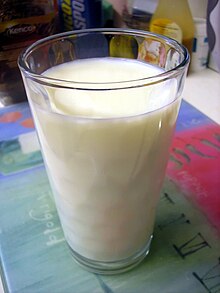predominantly negatively charged soil particles of clay and humus that adsorb cations. When positively charged. anions are adsorbed. Storage site for plant nutrients.
In chemistry, a colloid is a mixture in which one substance of microscopically dispersed insoluble particles is suspended throughout another substance. Sometimes the dispersed substance alone is called the colloid; the term colloidal suspension refers unambiguously to the overall mixture (although a narrower sense of the word suspension is distinguished from colloids by larger particle size). Unlike a solution, whose solute and solvent constitute only one phase, a colloid has a dispersed phase (the suspended particles) and a continuous phase (the medium of suspension) that arise by phase separation. To qualify as a colloid, the mixture must be one that does not settle or would take a very long time to settle appreciably.
The dispersed-phase particles have a diameter between approximately 1 and 1000 nanometers. Such particles are normally easily visible in an optical microscope, although at the smaller size range (r < 250 nm), an ultramicroscope or an electron microscope may be required. Homogeneous mixtures with a dispersed phase in this size range may be called colloidal aerosols, colloidal emulsions, colloidal foams, colloidal dispersions, or hydrosols. The dispersed-phase particles or droplets are affected largely by the surface chemistry present in the colloid.
Some colloids are translucent because of the Tyndall effect, which is the scattering of light by particles in the colloid. Other colloids may be opaque or have a slight color. The cytoplasm of living cells is an example of a colloid, containing many types of biomolecular condensate.
Colloidal suspensions are the subject of interface and colloid science. This field of study was introduced in 1845 by Italian chemist Francesco Selmi and further investigated since 1861 by Scottish scientist Thomas Graham.

